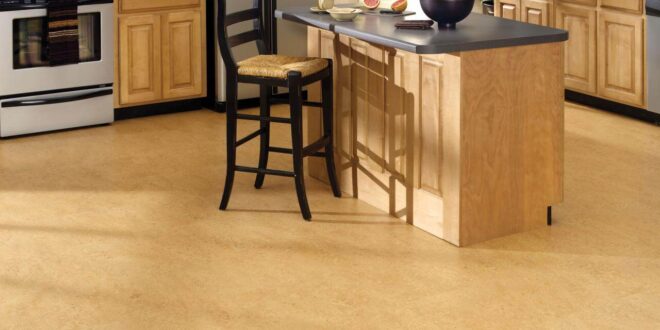Cork Flooring: Is It Right for Your Kitchen?
The kitchen. It’s the heart of the home, the command center for culinary adventures, and often the social hub for family and friends. It’s a space that sees a lot of action, from spilled milk to bustling dinner preparations. So, when it comes to choosing flooring, you need something that’s not only durable and easy to clean but also comfortable underfoot and aesthetically pleasing. Enter: cork flooring.
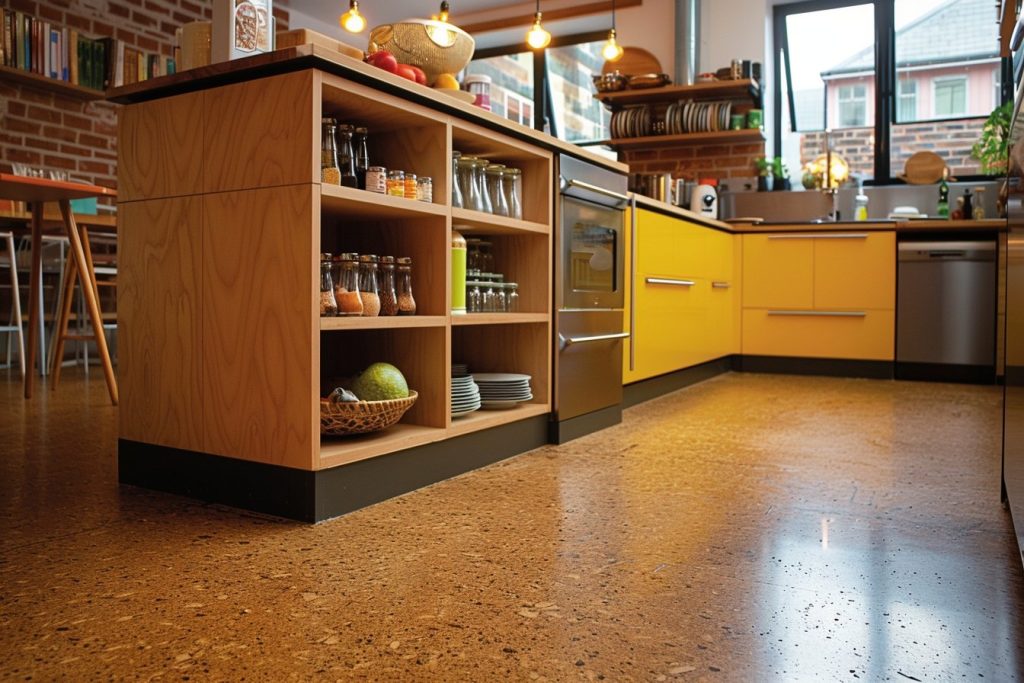
For years, cork has been relegated to wine stoppers and bulletin boards. But in recent years, it’s been making a serious comeback as a sustainable and stylish flooring option, particularly in kitchens. But is it really the right choice for you? Let’s dive deep into the world of cork flooring and explore its pros, cons, and everything in between, focusing specifically on its suitability for the demanding environment of a kitchen.</p
Why Consider Cork Flooring for Your Kitchen?
Cork flooring offers a unique blend of benefits that make it a compelling option for kitchen spaces. Here’s a closer look at some of the key advantages:
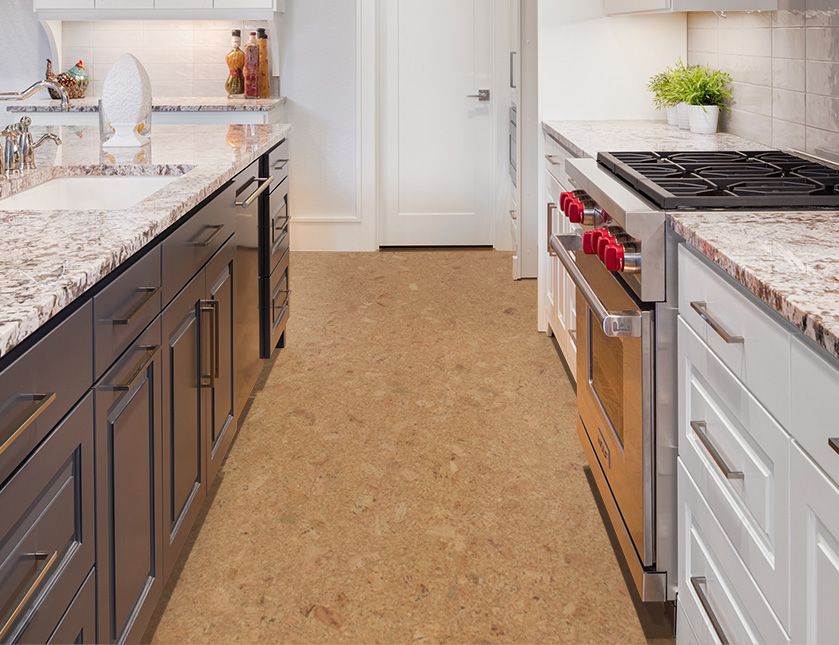
Softness and Comfort
One of the most appealing aspects of cork flooring is its inherent softness. Unlike hard surfaces like tile or hardwood, cork provides a cushioned feel underfoot. This can make a significant difference, especially if you spend a lot of time standing in the kitchen preparing meals. That slight give can drastically reduce strain on your joints, knees, and back. Imagine preparing that elaborate Sunday brunch without feeling like you’ve just run a marathon – that’s the promise of cork.

Warmth and Insulation
Cork is a natural insulator. Its cellular structure contains millions of tiny air-filled cells that trap heat, making it naturally warmer to the touch than tile or stone. This can be a huge benefit, especially in colder climates, where you might otherwise dread stepping onto a chilly kitchen floor in the morning. Plus, that insulating property can help reduce your energy bills by keeping your kitchen warmer in the winter and cooler in the summer.
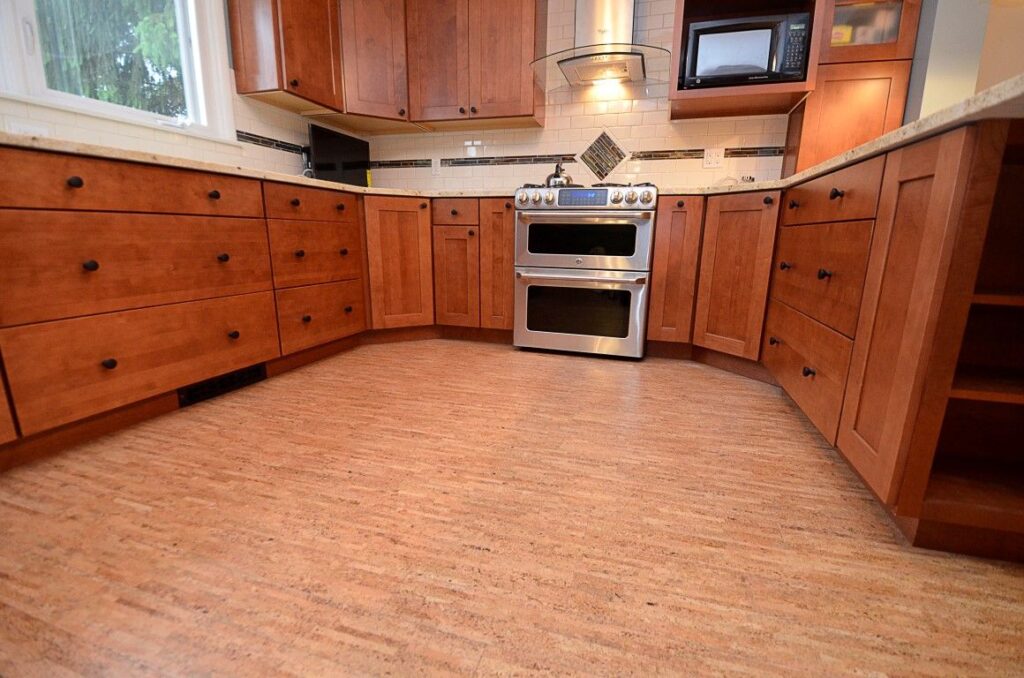
Sound Absorption
Kitchens can be noisy places. From clanging pots and pans to the whirring of appliances, the cacophony of sounds can be overwhelming. Cork flooring helps dampen sound, creating a more peaceful and relaxing atmosphere. Its sound-absorbing qualities mean less echo and reverberation, making it easier to converse and enjoy your time in the kitchen, especially if you have an open-concept layout.
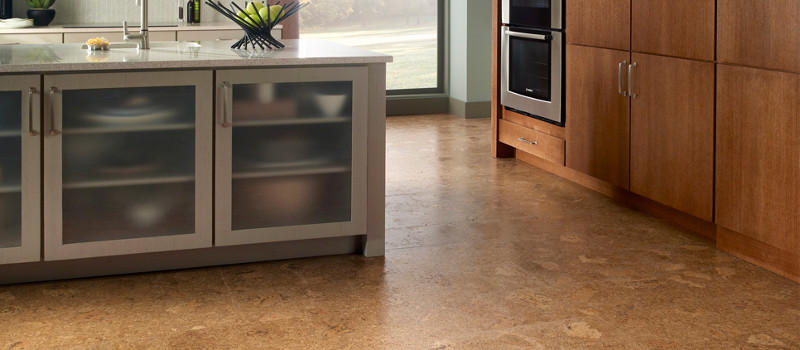
Sustainability and Eco-Friendliness
In an age of increasing environmental awareness, sustainability is a major consideration for many homeowners. Cork is a highly renewable resource. It’s harvested from the bark of the cork oak tree, which regenerates its bark every nine years. This means that no trees are cut down in the process. The process of harvesting cork doesn’t harm the trees; they continue to live and grow, absorbing carbon dioxide from the atmosphere. Choosing cork flooring is therefore a vote for sustainable practices and a smaller environmental footprint.
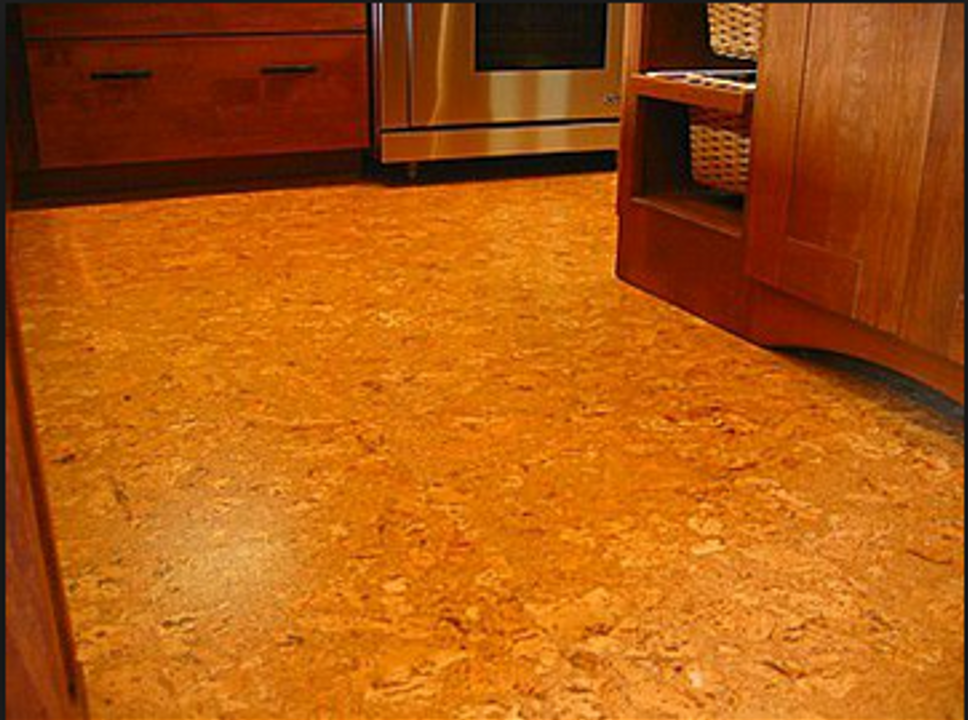
Water Resistance
Kitchens are prone to spills and moisture, so water resistance is a crucial factor when choosing flooring. Cork, when properly sealed, is naturally water-resistant. Its cellular structure contains suberin, a waxy substance that repels water. While it’s not completely waterproof, a properly sealed cork floor can withstand spills and splashes without damage. However, it’s important to wipe up spills promptly and avoid standing water, as prolonged exposure can eventually lead to damage.
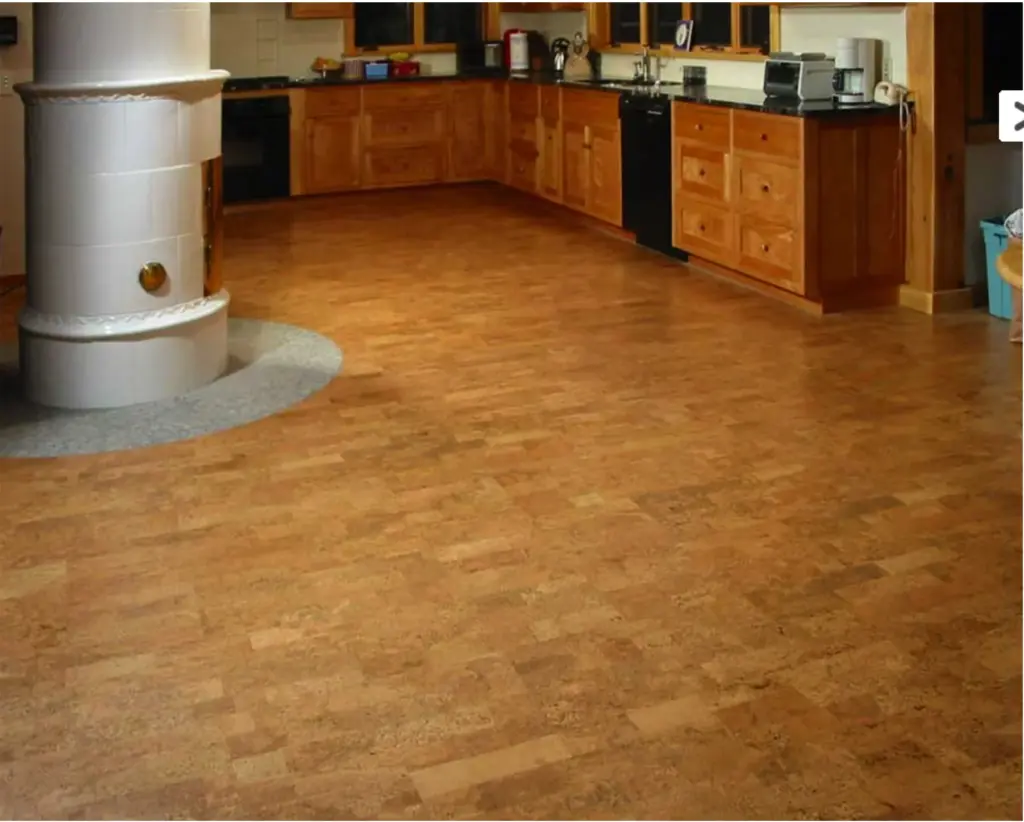
Antimicrobial Properties
Cork contains suberin, which naturally inhibits the growth of mold, mildew, and bacteria. This makes it a hygienic flooring option for the kitchen, where food preparation and spills are common. Its antimicrobial properties can help keep your kitchen cleaner and healthier, reducing the risk of allergens and odors.
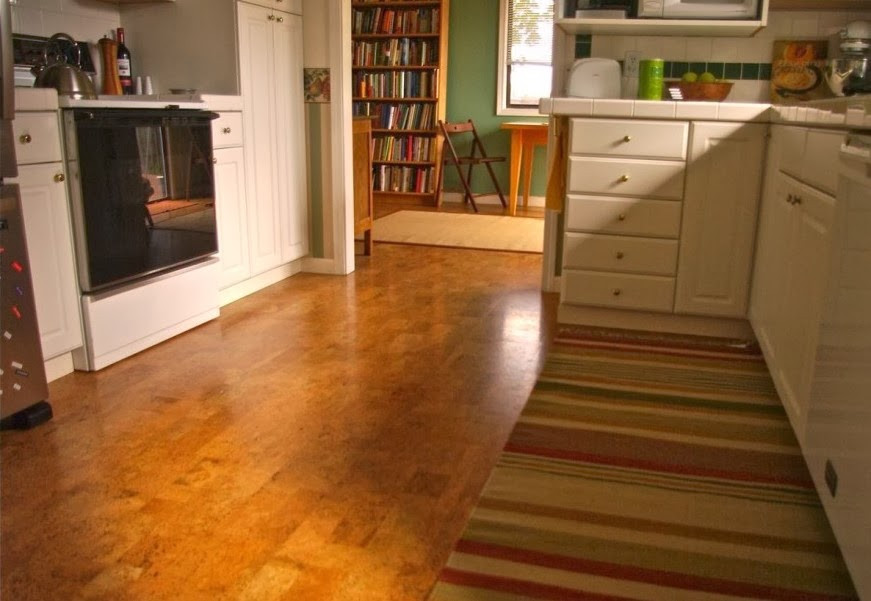
Stylish and Versatile
Cork flooring is no longer limited to the plain, grainy look of traditional cork boards. It comes in a wide variety of colors, patterns, and styles, from natural and rustic to sleek and modern. You can find cork tiles that mimic the look of wood, stone, or even ceramic tile. This versatility allows you to create a kitchen floor that complements your overall design aesthetic. You can choose from a range of finishes, including stained, painted, or textured options, to customize the look of your cork floor.
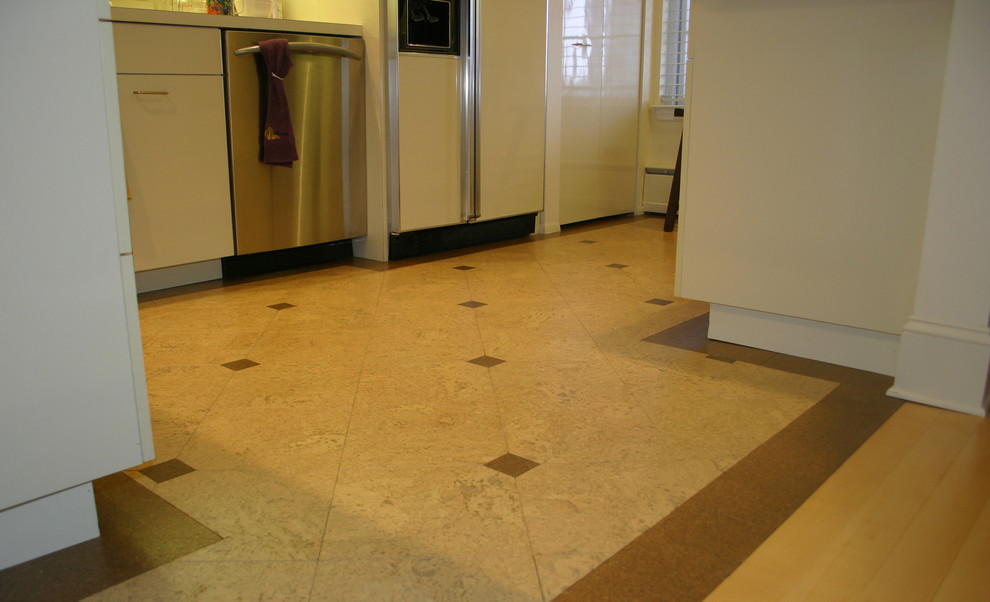
Potential Drawbacks of Cork Flooring in the Kitchen
While cork flooring offers numerous benefits, it’s important to be aware of its potential drawbacks before making a decision. Here are some factors to consider:
Susceptibility to Scratches and Dents
While cork is relatively soft, it can be susceptible to scratches and dents from sharp objects, heavy furniture, or pet claws. However, this can be mitigated by using furniture pads under heavy items, trimming pet nails regularly, and choosing a cork floor with a higher density and a durable finish. Also, the natural give of cork can actually help it resist permanent indentation in some cases. Think of it like a memory foam mattress – it bounces back!
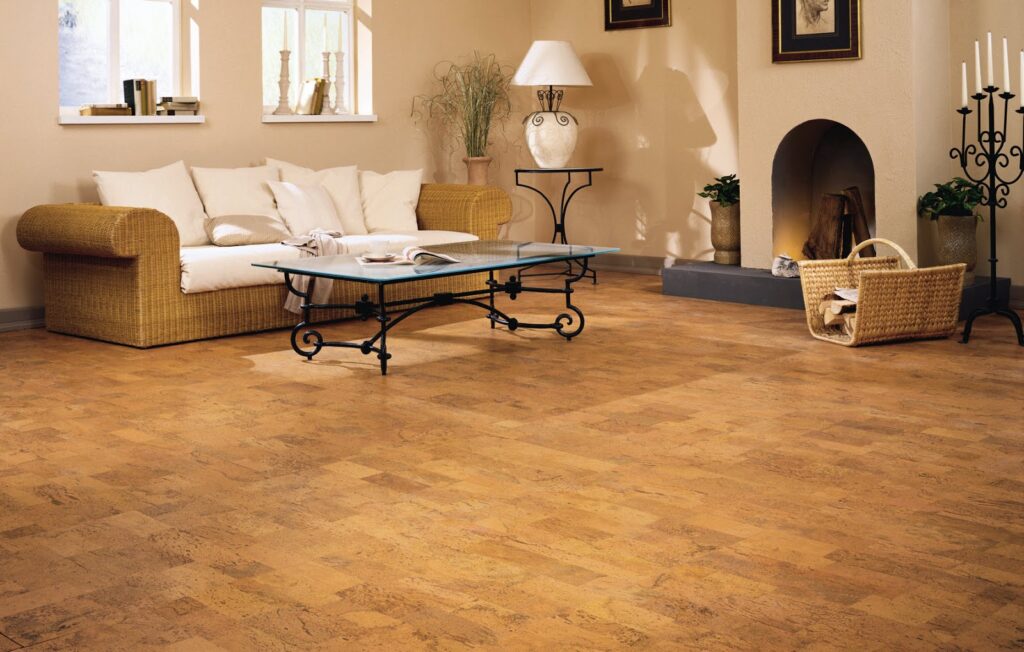
Maintenance Requirements
Cork flooring requires regular maintenance to keep it looking its best. This includes sweeping or vacuuming regularly to remove dirt and debris, and mopping with a damp cloth and a mild, pH-neutral cleaner. Avoid using harsh chemicals or abrasive cleaners, as they can damage the finish. Depending on the type of finish, you may need to reapply a sealant or wax periodically to maintain its water resistance and protect the surface.
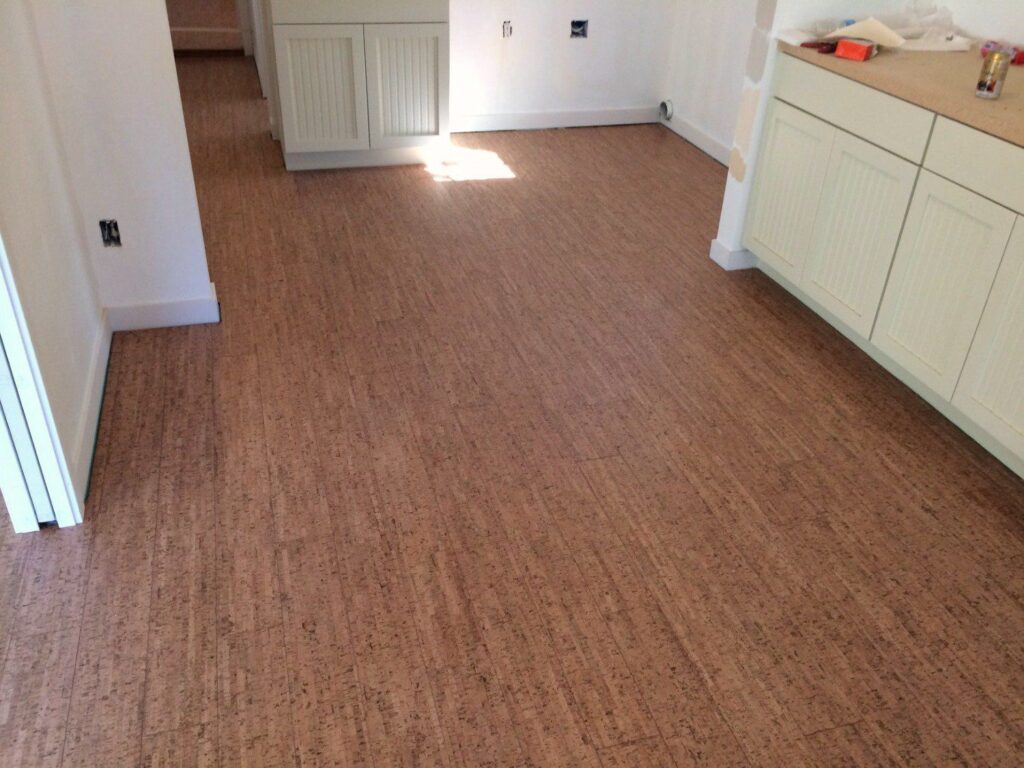
Fading from Sunlight
Like many natural materials, cork can fade over time when exposed to direct sunlight. This can be minimized by using window coverings, such as blinds or curtains, to filter the light. You can also choose a cork floor with a UV-resistant finish to help prevent fading.
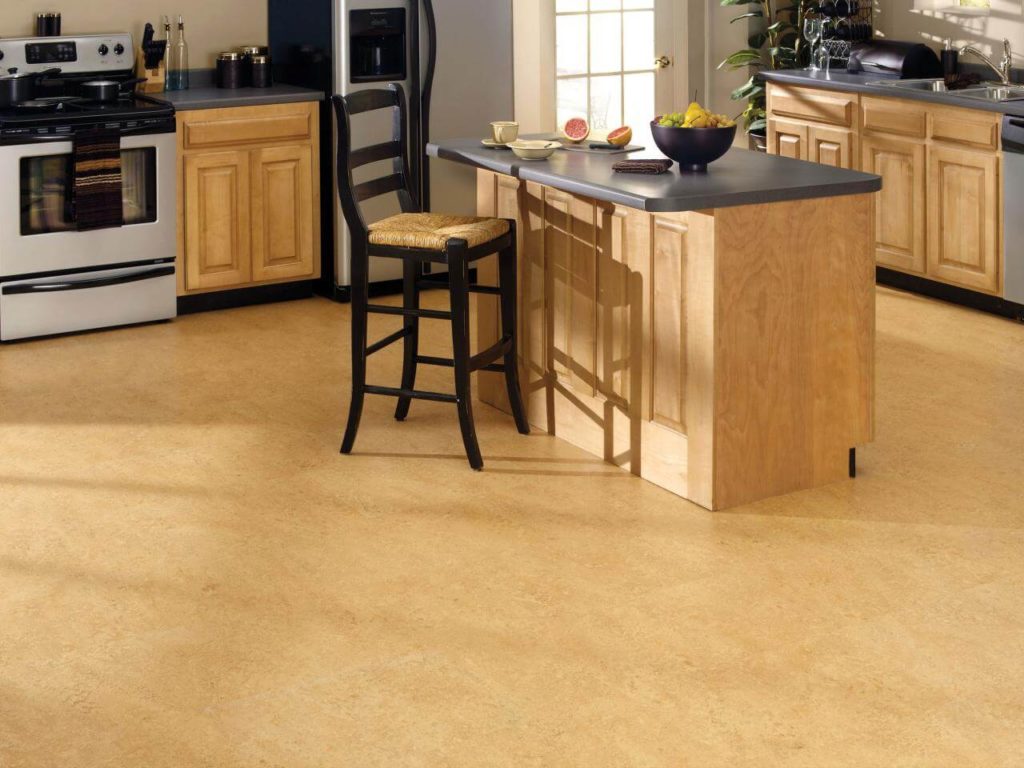
Cost
The initial cost of cork flooring can be comparable to or slightly higher than other flooring options, such as laminate or vinyl. However, its long-term durability, sustainability, and comfort can make it a worthwhile investment. Consider the overall lifespan of the flooring and the potential savings on energy bills when evaluating the cost.
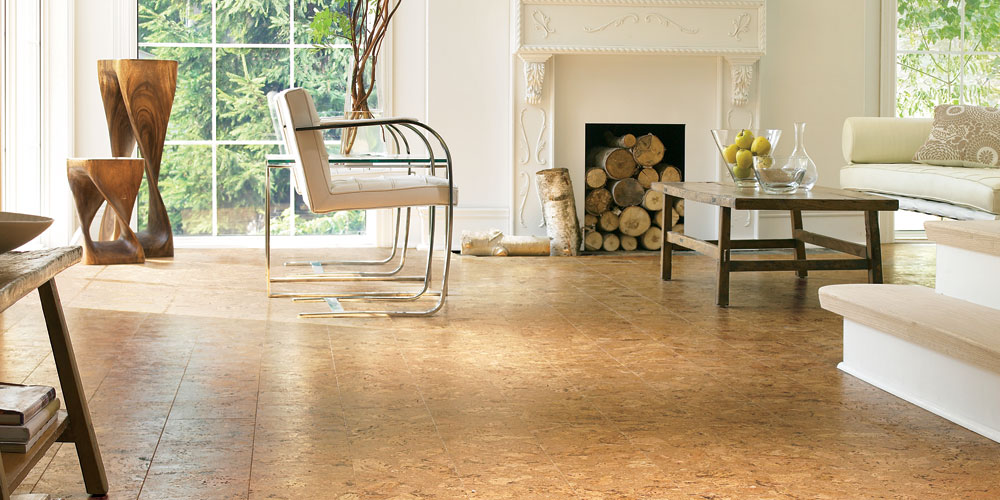
Not Completely Waterproof
While cork is water-resistant, it’s not completely waterproof. Prolonged exposure to standing water can cause it to swell and warp. It’s important to address spills promptly and avoid using cork flooring in areas that are frequently exposed to moisture, such as around sinks or dishwashers, without proper sealing and maintenance.
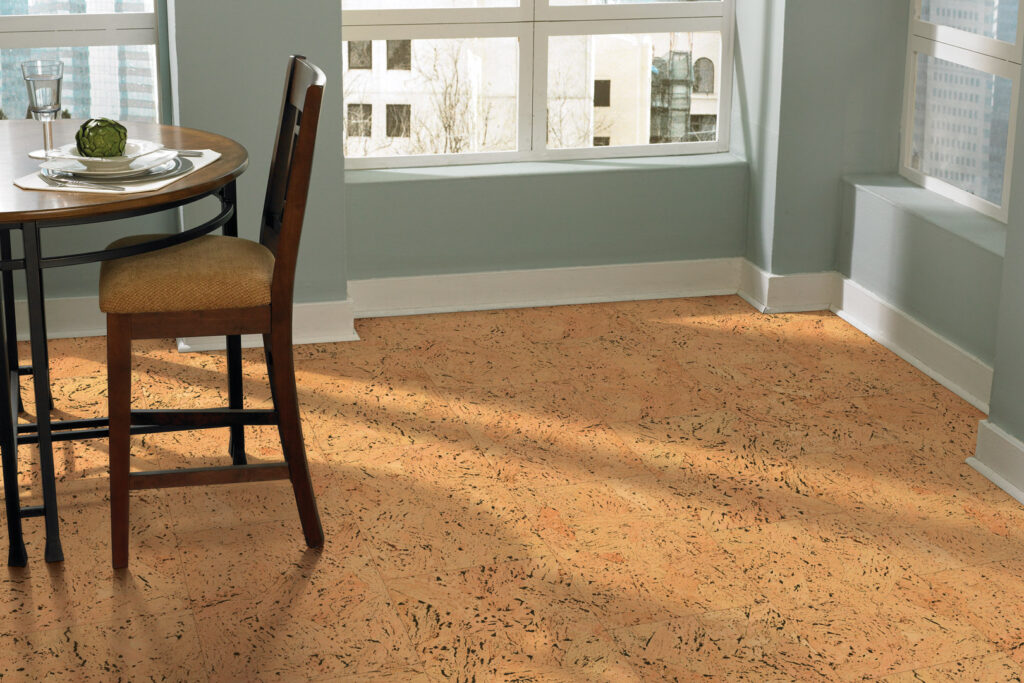
Choosing the Right Cork Flooring for Your Kitchen
Not all cork flooring is created equal. When choosing cork flooring for your kitchen, consider the following factors:
Type of Cork Flooring
There are two main types of cork flooring: cork tiles and cork planks. Cork tiles are typically square or rectangular and are installed individually, similar to ceramic tiles. Cork planks are longer and wider and are installed as a floating floor, meaning they’re not glued or nailed to the subfloor. Cork planks often have a click-lock system that makes installation relatively easy. The type you choose will depend on your personal preference, budget, and DIY skills.
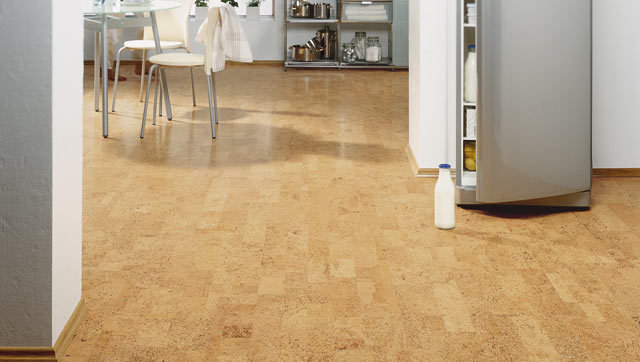
Thickness and Density
The thickness and density of the cork flooring will affect its durability and comfort. Thicker cork flooring will provide more cushioning and insulation. Denser cork flooring will be more resistant to scratches and dents. For a kitchen, it’s generally recommended to choose a cork floor with a thickness of at least 8mm and a density of at least 13 lbs/cubic foot.
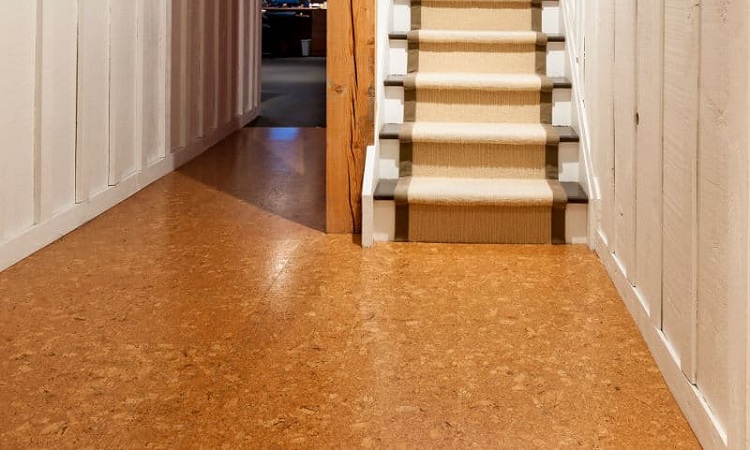
Finish
The finish on your cork flooring is crucial for protecting it from water damage, scratches, and stains. Common finishes include polyurethane, wax, and varnish. Polyurethane is a durable and water-resistant finish that requires minimal maintenance. Wax provides a more natural look but requires more frequent maintenance. Varnish is a durable and water-resistant finish that can be applied in multiple coats for added protection. Consider the level of maintenance you’re willing to commit to when choosing a finish.
Style and Color
Cork flooring comes in a wide variety of styles and colors. Choose a style and color that complements your kitchen’s overall design aesthetic. Consider the size and layout of your kitchen when choosing a style. Lighter colors can make a small kitchen feel larger and brighter, while darker colors can add warmth and sophistication to a larger kitchen.
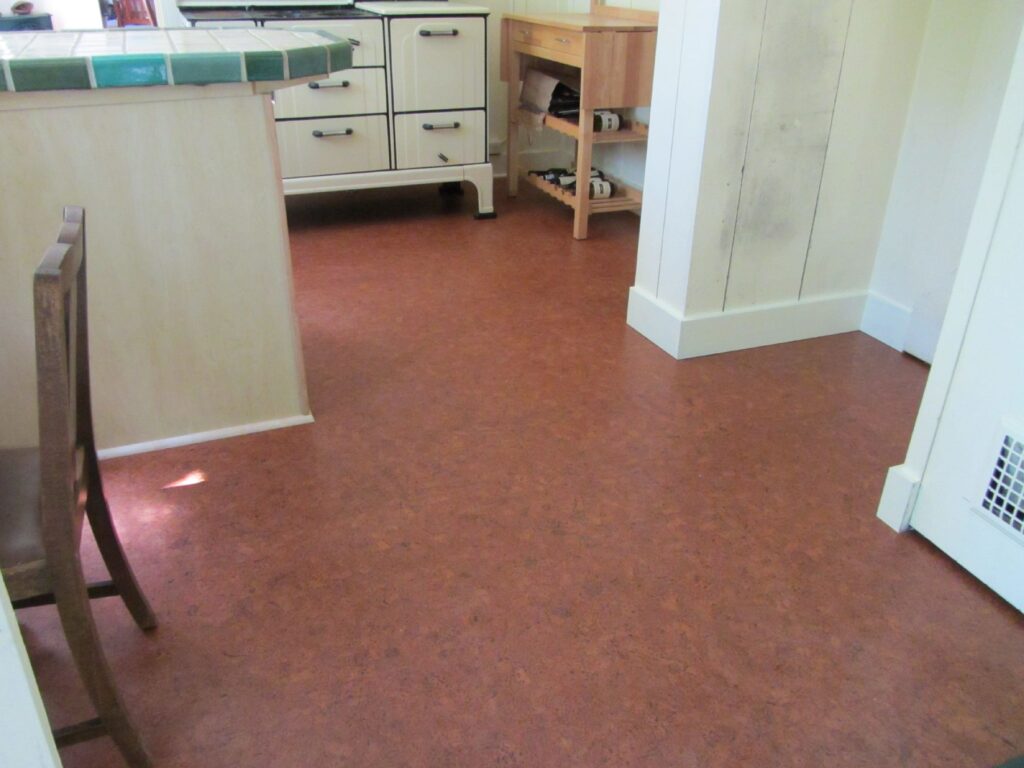
Installation of Cork Flooring in the Kitchen
Cork flooring can be installed by a professional or as a DIY project. If you’re comfortable with basic home improvement tasks, you may be able to install cork flooring yourself. However, if you’re not confident in your abilities, it’s best to hire a professional installer. Professional installation will ensure that the flooring is properly installed and sealed, which is crucial for its longevity and performance.
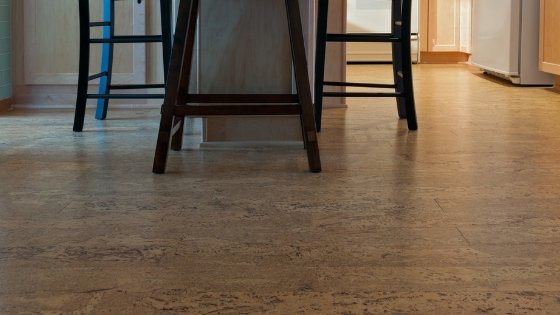
DIY Installation Tips
- Prepare the subfloor: Ensure the subfloor is clean, level, and dry. Any imperfections in the subfloor can telegraph through the cork flooring.
- Acclimate the cork flooring: Allow the cork flooring to acclimate to the kitchen’s temperature and humidity for at least 48 hours before installation.
- Follow the manufacturer’s instructions: Carefully follow the manufacturer’s instructions for installation, including the proper adhesive or click-lock system.
- Use the right tools: Use the right tools for cutting and installing the cork flooring, such as a utility knife, a rubber mallet, and a tapping block.
- Seal the seams: After installation, seal the seams between the cork tiles or planks to prevent water penetration.
Maintaining Your Cork Kitchen Floor
Proper maintenance is essential for keeping your cork kitchen floor looking its best and extending its lifespan. Here are some tips for maintaining your cork floor:
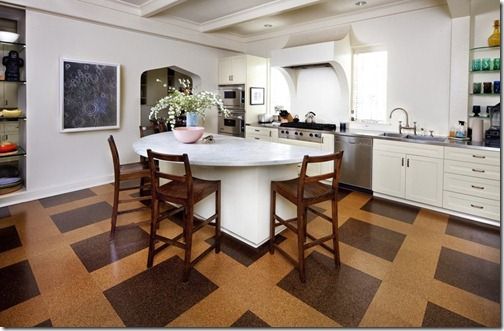
- Sweep or vacuum regularly: Sweep or vacuum your cork floor regularly to remove dirt and debris.
- Mop with a damp cloth: Mop your cork floor with a damp cloth and a mild, pH-neutral cleaner. Avoid using harsh chemicals or abrasive cleaners.
- Wipe up spills promptly: Wipe up spills promptly to prevent staining or water damage.
- Use furniture pads: Use furniture pads under heavy items to prevent dents and scratches.
- Trim pet nails regularly: Trim pet nails regularly to prevent scratches.
- Reapply sealant or wax: Depending on the type of finish, you may need to reapply a sealant or wax periodically to maintain its water resistance and protect the surface. Follow the manufacturer’s instructions for reapplying the finish.
- Consider area rugs: Use area rugs in high-traffic areas, such as in front of the sink or stove, to protect the cork flooring from wear and tear.
Cork vs. Other Kitchen Flooring Options
Let’s compare cork flooring to some other popular kitchen flooring options:
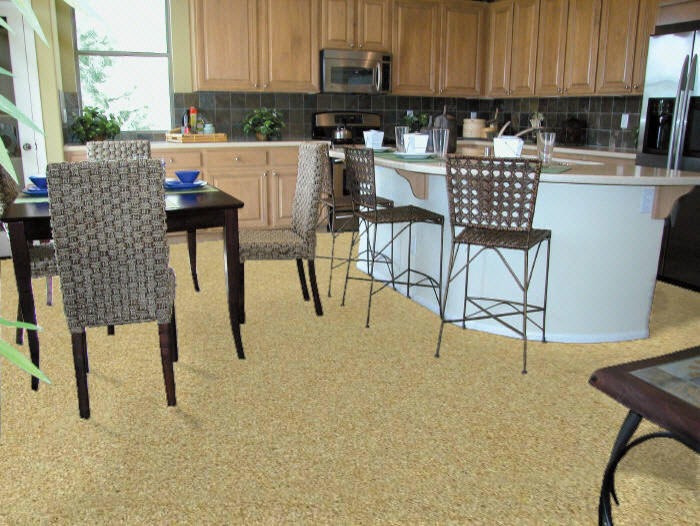
Cork vs. Hardwood
Hardwood flooring is a classic and elegant choice for kitchens. However, it’s not as soft or comfortable as cork. Hardwood is also more susceptible to water damage and scratches than cork. Cork is a more sustainable option than hardwood, as it’s harvested from the bark of the cork oak tree, while hardwood requires cutting down trees.
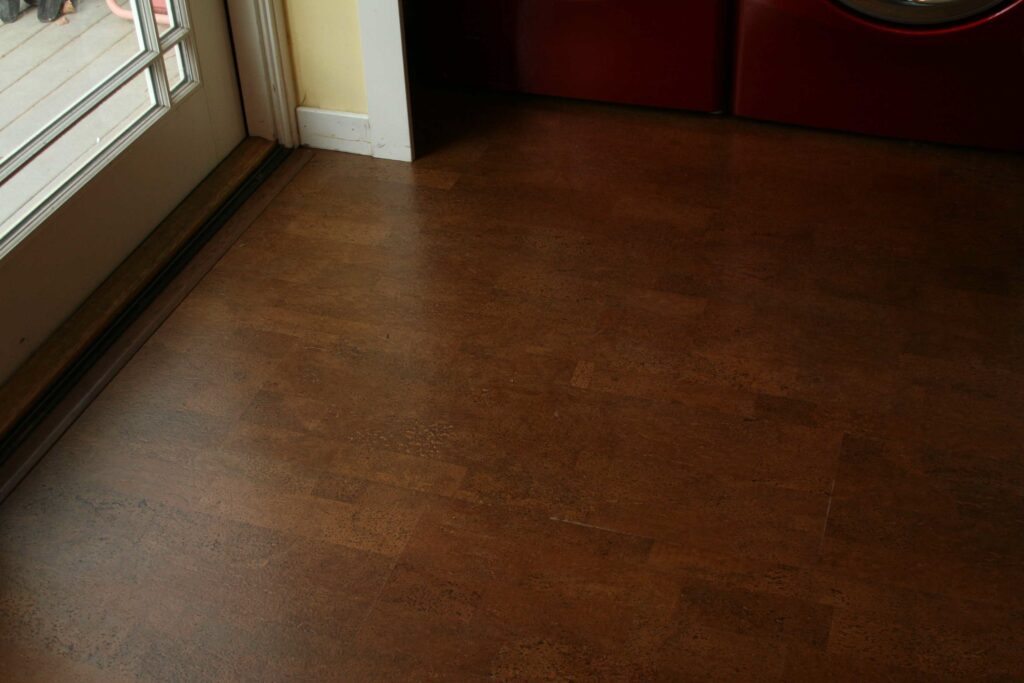
Cork vs. Tile
Tile is a durable and water-resistant option for kitchens. However, it’s a hard and cold surface that can be uncomfortable to stand on for long periods. Cork is a softer and warmer option than tile, providing more comfort underfoot. Tile can also be slippery when wet, while cork provides better traction.
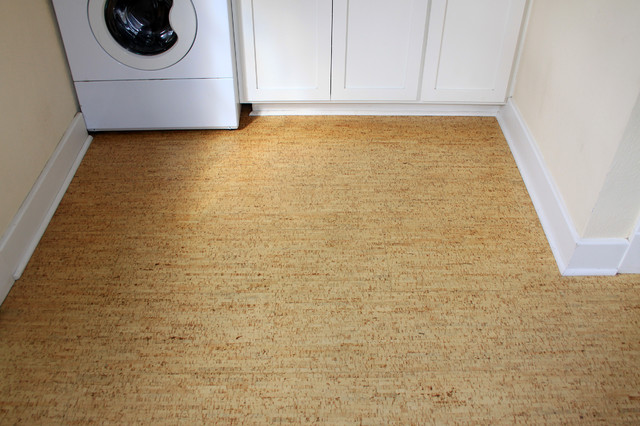
Cork vs. Laminate
Laminate flooring is a budget-friendly option that mimics the look of hardwood or tile. However, it’s not as durable or water-resistant as cork. Laminate is also not as sustainable as cork, as it’s typically made from synthetic materials. Cork offers a more natural and comfortable feel than laminate.
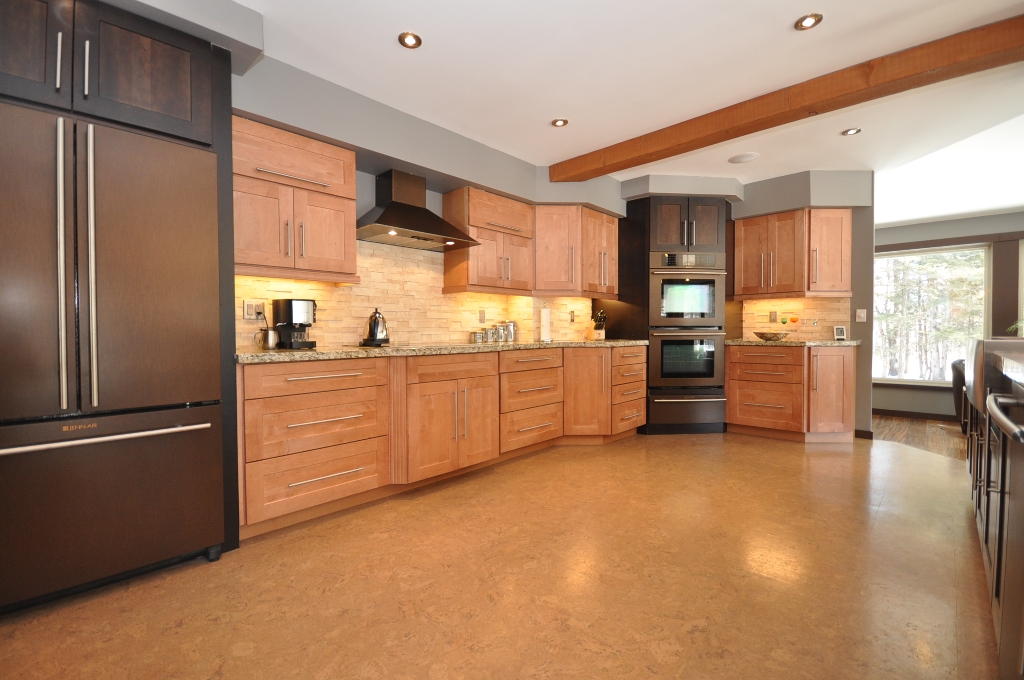
Cork vs. Vinyl
Vinyl flooring is a waterproof and low-maintenance option for kitchens. However, it’s not as environmentally friendly as cork, as it’s made from PVC, a type of plastic. Cork is also more comfortable and warmer than vinyl. While some luxury vinyl options can mimic the look and feel of natural materials, cork offers a unique texture and aesthetic that’s hard to replicate.
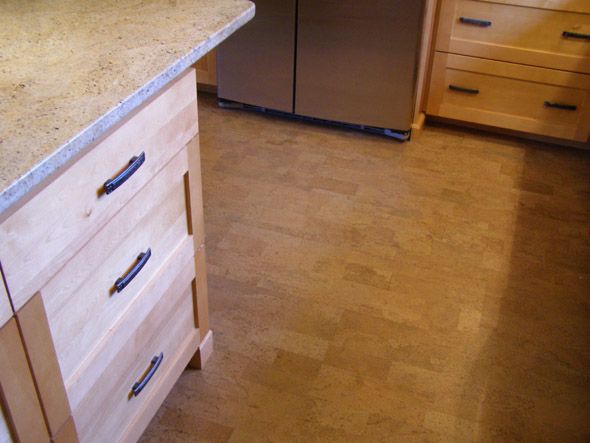
Real-Life Examples of Cork Kitchens
To give you a better idea of what cork flooring looks like in a real-world kitchen setting, here are a few examples:
- Modern Minimalist Kitchen: A sleek, modern kitchen with light-colored cork plank flooring. The cork adds warmth and texture to the minimalist design, creating a welcoming and comfortable space.
- Rustic Farmhouse Kitchen: A cozy farmhouse kitchen with natural cork tile flooring. The cork complements the rustic aesthetic, adding a touch of warmth and character.
- Eclectic Bohemian Kitchen: A vibrant, eclectic kitchen with stained cork flooring in a geometric pattern. The cork adds a unique and artistic touch to the space.
- Contemporary Open-Concept Kitchen: A large, open-concept kitchen with cork flooring extending into the living area. The cork provides a seamless transition between the two spaces and helps dampen sound.
The Future of Cork Flooring
As sustainability and comfort become increasingly important to homeowners, cork flooring is poised to become even more popular in kitchens and other areas of the home. Innovations in cork flooring technology are leading to more durable, water-resistant, and stylish options. We can expect to see new colors, patterns, and textures in the coming years, as well as improved finishes that offer better protection and require less maintenance.
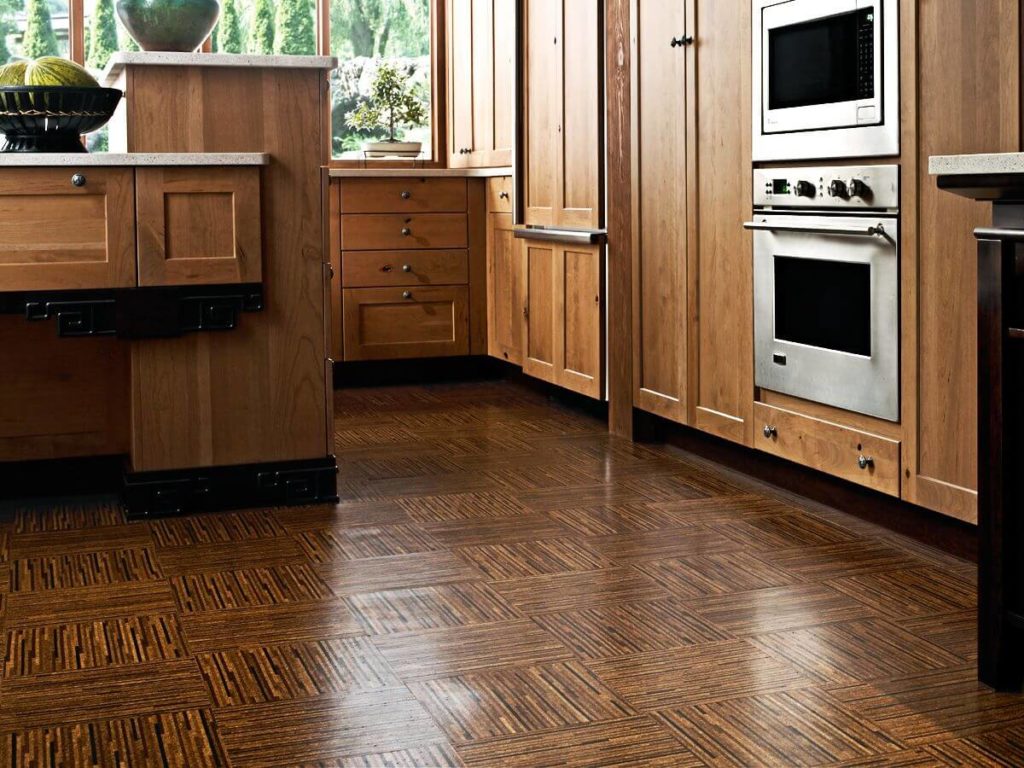
The versatility of cork also lends itself to creative applications. Imagine cork backsplashes, cork accent walls, or even cork countertops. As designers and homeowners become more aware of the benefits of cork, we can expect to see it used in new and innovative ways.
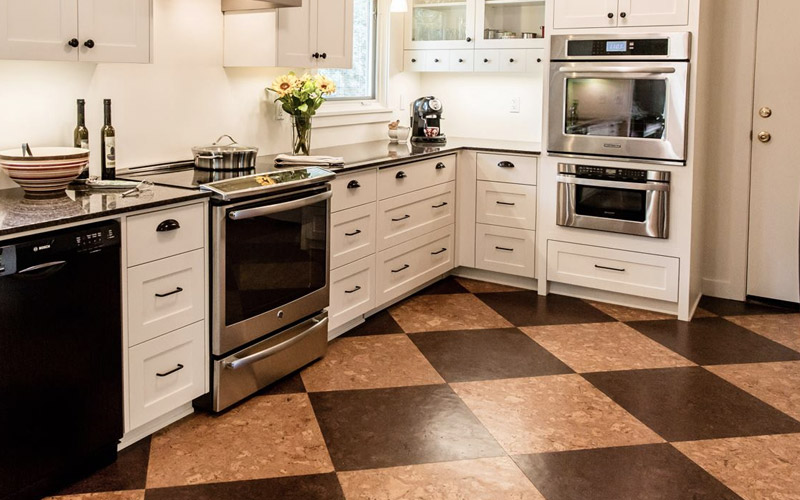
Conclusion: Is Cork Flooring the Right Choice for Your Kitchen?
Cork flooring offers a unique combination of benefits that make it a compelling option for kitchens. It’s soft, warm, sound-absorbing, sustainable, water-resistant (when properly sealed), and stylish. However, it’s also important to be aware of its potential drawbacks, such as its susceptibility to scratches and dents and its maintenance requirements. By carefully considering the pros and cons and choosing the right type of cork flooring, you can create a beautiful, comfortable, and sustainable kitchen that you’ll love for years to come. Ultimately, the decision of whether or not to use cork flooring in your kitchen is a personal one. Weigh your priorities, consider your lifestyle, and research your options carefully. If you value comfort, sustainability, and a unique aesthetic, cork flooring might just be the perfect choice for you. Don’t be afraid to explore different styles and colors to find the perfect fit for your dream kitchen.
 Nimila
Nimila
